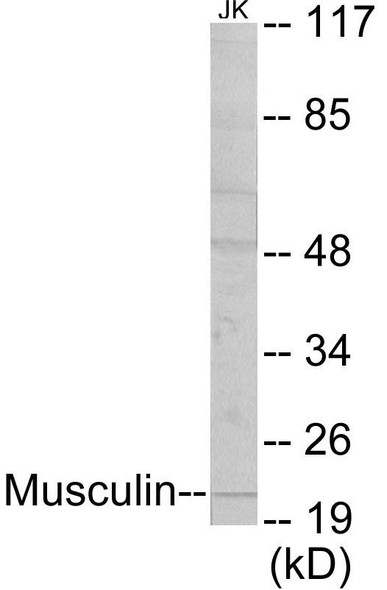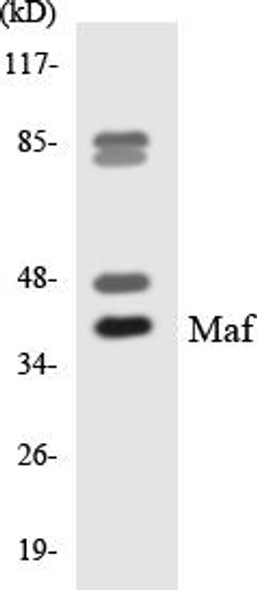Description
DMPK Colorimetric Cell-Based ELISA
The DMPK Colorimetric Cell-Based ELISA kit from AssayGenie is a cutting-edge solution for researchers studying drug metabolism and pharmacokinetics. This innovative kit allows for the quantitative measurement of drug-metabolizing enzymes in cell lysate samples, providing valuable insights into drug efficacy and toxicity.With its high sensitivity and specificity, the DMPK Colorimetric Cell-Based ELISA kit offers reliable and reproducible results, making it a valuable tool for drug discovery and development.
Researchers can confidently assess drug metabolism pathways, identify potential drug-drug interactions, and optimize drug dosing regimens using this advanced kit.Whether you are studying the pharmacokinetics of new drug candidates or investigating drug metabolism in disease models, the DMPK Colorimetric Cell-Based ELISA kit from AssayGenie is an indispensable tool for your research needs. Trust in AssayGenie to provide you with high-quality, user-friendly solutions for your drug metabolism studies.
| Product Name: | DMPK Colorimetric Cell-Based ELISA |
| Product Code: | CBCAB01070 |
| ELISA Type: | Cell-Based |
| Target: | DMPK |
| Reactivity: | Human |
| Dynamic Range: | > 5000 Cells |
| Detection Method: | Colorimetric 450 nmStorage/Stability:4°C/6 Months |
| Format: | 96-Well Microplate |
The DMPK Colorimetric Cell-Based ELISA Kit is a convenient, lysate-free, high throughput and sensitive assay kit that can detect DMPK protein expression profile in cells. The kit can be used for measuring the relative amounts of DMPK in cultured cells as well as screening for the effects that various treatments, inhibitors (ie siRNA or chemicals), or activators have on DMPK.
Qualitative determination of DMPK concentration is achieved by an indirect ELISA format. In essence, DMPK is captured by DMPK-specific primary antibodies while the HRP-conjugated secondary antibodies bind the Fc region of the primary antibody. Through this binding, the HRP enzyme conjugated to the secondary antibody can catalyze a colorimetric reaction upon substrate addition. Due to the qualitative nature of the Cell-Based ELISA, multiple normalization methods are needed:
| 1. | A monoclonal antibody specific for human GAPDH is included to serve as an internal positive control in normalizing the target absorbance values. |
| 2. | Following the colorimetric measurement of HRP activity via substrate addition, the Crystal Violet whole-cell staining method may be used to determine cell density. After staining, the results can be analysed by normalizing the absorbance values to cell amounts, by which the plating difference can be adjusted. |
| Database Information: | Gene ID: 1760, UniProt ID: Q09013, OMIM: 605377, Unigene: Hs.631596 |
| Gene Symbol: | DMPK |
| Sub Type: | None |
| UniProt Protein Function: | DMPK1: Non-receptor serine/threonine protein kinase which is necessary for the maintenance of skeletal muscle structure and function. May play a role in myocyte differentiation and survival by regulating the integrity of the nuclear envelope and the expression of muscle-specific genes. May also phosphorylate PPP1R12A and inhibit the myosin phosphatase activity to regulate myosin phosphorylation. Also critical to the modulation of cardiac contractility and to the maintenance of proper cardiac conduction activity probably through the regulation of cellular calcium homeostasis. Phosphorylates PLN, a regulator of calcium pumps and may regulate sarcoplasmic reticulum calcium uptake in myocytes. May also phosphorylate FXYD1/PLM which is able to induce chloride currents. May also play a role in synaptic plasticity. Defects in DMPK are the cause of dystrophia myotonica type 1 (DM1); also known as Steinert disease. A muscular disorder characterized by myotonia, muscle wasting in the distal extremities, cataract, hypogonadism, defective endocrine functions, male baldness and cardiac arrhythmias. The causative mutation is a CTG expansion in the 3'-UTR of the DMPK gene. A length exceeding 50 CTG repeats is pathogenic, while normal individuals have 5 to 37 repeats. Intermediate alleles with 35-49 triplets are not disease-causing but show instability in intergenerational transmissions. Disease severity varies with the number of repeats: mildly affected persons have 50 to 150 repeats, patients with classic DM have 100 to 1,000 repeats, and those with congenital onset can have more than 2,000 repeats. Belongs to the protein kinase superfamily. AGC Ser/Thr protein kinase family. DMPK subfamily. 12 isoforms of the human protein are produced by alternative splicing. |
| UniProt Protein Details: | Protein type:Kinase, protein; Protein kinase, Ser/Thr (non-receptor); Protein kinase, AGC; Mitochondrial; EC 2.7.11.1; Membrane protein, integral; AGC group; DMPK family; GEK subfamily Chromosomal Location of Human Ortholog: 19q13.3 Cellular Component: cytosol; endoplasmic reticulum membrane; integral to mitochondrial outer membrane; nuclear membrane; plasma membrane; sarcoplasmic reticulum membrane Molecular Function:ATP binding; myosin phosphatase regulator activity; protein binding; protein serine/threonine kinase activity Biological Process: cellular calcium ion homeostasis; nuclear membrane organization and biogenesis; peptidyl-serine phosphorylation; protein amino acid phosphorylation; regulation of heart contraction; regulation of skeletal muscle contraction by calcium ion signaling Disease: Myotonic Dystrophy 1 |
| NCBI Summary: | The protein encoded by this gene is a serine-threonine kinase that is closely related to other kinases that interact with members of the Rho family of small GTPases. Substrates for this enzyme include myogenin, the beta-subunit of the L-type calcium channels, and phospholemman. The 3' untranslated region of this gene contains 5-38 copies of a CTG trinucleotide repeat. Expansion of this unstable motif to 50-5,000 copies causes myotonic dystrophy type I, which increases in severity with increasing repeat element copy number. Repeat expansion is associated with condensation of local chromatin structure that disrupts the expression of genes in this region. Several alternatively spliced transcript variants of this gene have been described, but the full-length nature of some of these variants has not been determined. [provided by RefSeq, Jul 2016] |
| UniProt Code: | Q09013 |
| NCBI GenInfo Identifier: | 363548519 |
| NCBI Gene ID: | 1760 |
| NCBI Accession: | Q09013.3 |
| UniProt Secondary Accession: | Q09013,Q16205, Q6P5Z6, E5KR08, |
| UniProt Related Accession: | Q09013 |
| Molecular Weight: | 60,790 Da |
| NCBI Full Name: | Myotonin-protein kinase |
| NCBI Synonym Full Names: | dystrophia myotonica protein kinase |
| NCBI Official Symbol: | DMPK |
| NCBI Official Synonym Symbols: | DM; DM1; DMK; MDPK; DM1PK; MT-PK |
| NCBI Protein Information: | myotonin-protein kinase |
| UniProt Protein Name: | Myotonin-protein kinase |
| UniProt Synonym Protein Names: | DM-kinase; DMK; DM1 protein kinase; DMPK; Myotonic dystrophy protein kinase |
| Protein Family: | Myotonin-protein kinase |
| UniProt Gene Name: | DMPK |
| UniProt Entry Name: | DMPK_HUMAN |
| Component | Quantity |
| 96-Well Cell Culture Clear-Bottom Microplate | 2 plates |
| 10X TBS | 24 mL |
| Quenching Buffer | 24 mL |
| Blocking Buffer | 50 mL |
| 15X Wash Buffer | 50 mL |
| Primary Antibody Diluent | 12 mL |
| 100x Anti-Phospho Target Antibody | 60 µL |
| 100x Anti-Target Antibody | 60 µL |
| Anti-GAPDH Antibody | 60 µL |
| HRP-Conjugated Anti-Rabbit IgG Antibody | 12 mL |
| HRP-Conjugated Anti-Mouse IgG Antibody | 12 mL |
| SDS Solution | 12 mL |
| Stop Solution | 24 mL |
| Ready-to-Use Substrate | 12 mL |
| Crystal Violet Solution | 12 mL |
| Adhesive Plate Seals | 2 seals |
The following materials and/or equipment are NOT provided in this kit but are necessary to successfully conduct the experiment:
- Microplate reader able to measure absorbance at 450 nm and/or 595 nm for Crystal Violet Cell Staining (Optional)
- Micropipettes with capability of measuring volumes ranging from 1 µL to 1 ml
- 37% formaldehyde (Sigma Cat# F-8775) or formaldehyde from other sources
- Squirt bottle, manifold dispenser, multichannel pipette reservoir or automated microplate washer
- Graph paper or computer software capable of generating or displaying logarithmic functions
- Absorbent papers or vacuum aspirator
- Test tubes or microfuge tubes capable of storing ≥1 ml
- Poly-L-Lysine (Sigma Cat# P4832 for suspension cells)
- Orbital shaker (optional)
- Deionized or sterile water
*Note: Protocols are specific to each batch/lot. For the correct instructions please follow the protocol included in your kit.
| Step | Procedure |
| 1. | Seed 200 µL of 20,000 adherent cells in culture medium in each well of a 96-well plate. The plates included in the kit are sterile and treated for cell culture. For suspension cells and loosely attached cells, coat the plates with 100 µL of 10 µg/ml Poly-L-Lysine (not included) to each well of a 96-well plate for 30 minutes at 37°C prior to adding cells. |
| 2. | Incubate the cells for overnight at 37°C, 5% CO2. |
| 3. | Treat the cells as desired. |
| 4. | Remove the cell culture medium and rinse with 200 µL of 1x TBS, twice. |
| 5. | Fix the cells by incubating with 100 µL of Fixing Solution for 20 minutes at room temperature. The 4% formaldehyde is used for adherent cells and 8% formaldehyde is used for suspension cells and loosely attached cells. |
| 6. | Remove the Fixing Solution and wash the plate 3 times with 200 µL 1x Wash Buffer for five minutes each time with gentle shaking on the orbital shaker. The plate can be stored at 4°C for a week. |
| 7. | Add 100 µL of Quenching Buffer and incubate for 20 minutes at room temperature. |
| 8. | Wash the plate 3 times with 1x Wash Buffer for 5 minutes each time. |
| 9. | Add 200 µL of Blocking Buffer and incubate for 1 hour at room temperature. |
| 10. | Wash 3 times with 200 µL of 1x Wash Buffer for 5 minutes each time. |
| 11. | Add 50 µL of 1x primary antibodies (Anti-DMPK Antibody and/or Anti-GAPDH Antibody) to the corresponding wells, cover with Parafilm and incubate for 16 hours (overnight) at 4°C. If the target expression is known to be high, incubate for 2 hours at room temperature. |
| 12. | Wash 3 times with 200 µL of 1x Wash Buffer for 5 minutes each time. |
| 13. | Add 50 µL of 1x secondary antibodies (HRP-Conjugated AntiRabbit IgG Antibody or HRP-Conjugated Anti-Mouse IgG Antibody) to corresponding wells and incubate for 1.5 hours at room temperature. |
| 14. | Wash 3 times with 200 µL of 1x Wash Buffer for 5 minutes each time. |
| 15. | Add 50 µL of Ready-to-Use Substrate to each well and incubate for 30 minutes at room temperature in the dark. |
| 16. | Add 50 µL of Stop Solution to each well and read OD at 450 nm immediately using the microplate reader. |
(Additional Crystal Violet staining may be performed if desired – details of this may be found in the kit technical manual.)






